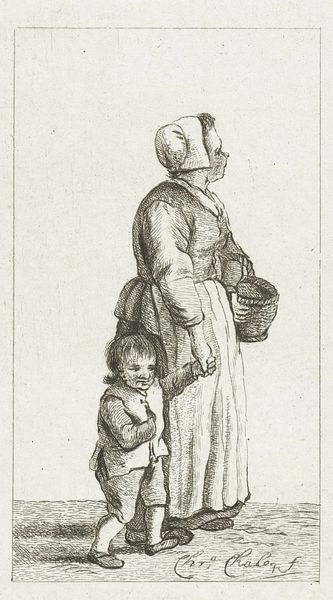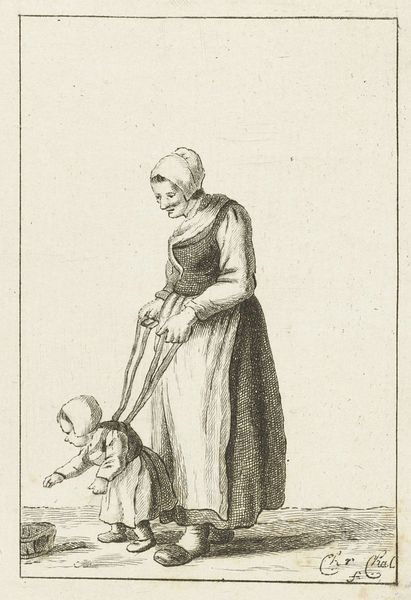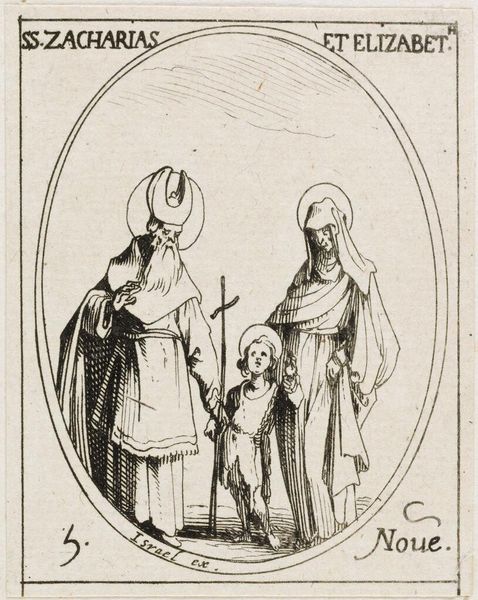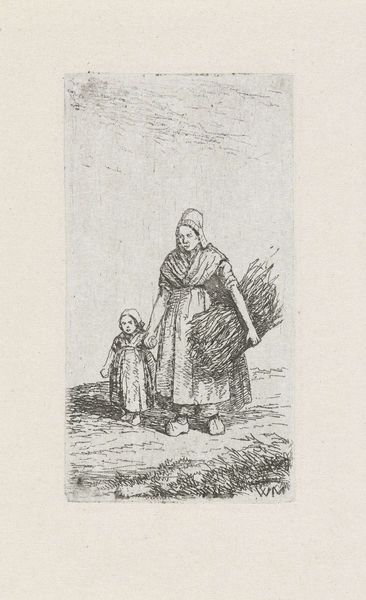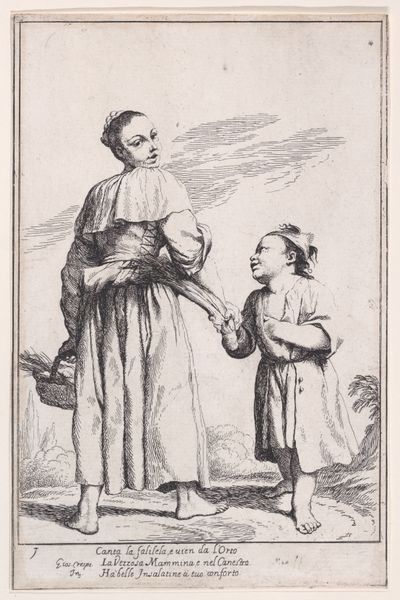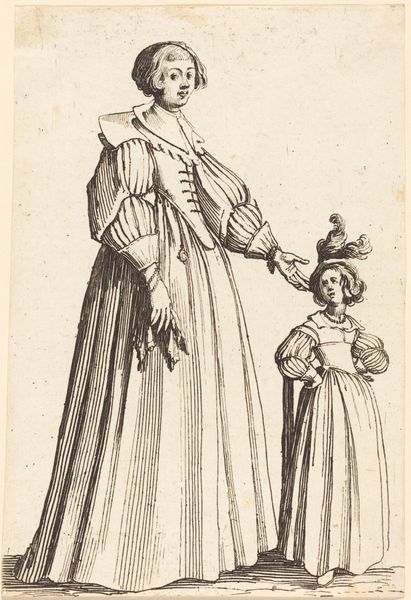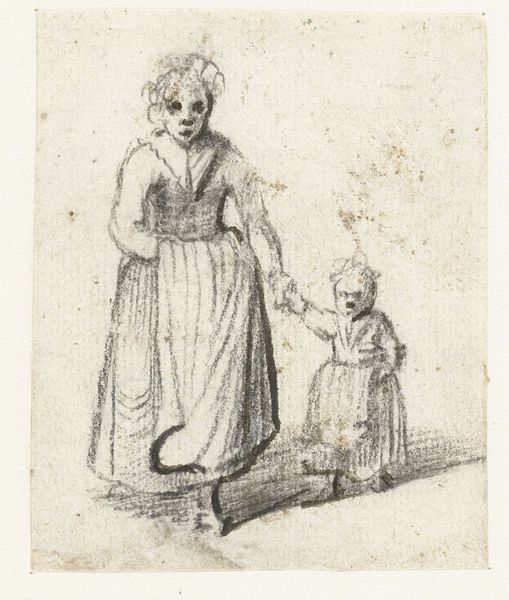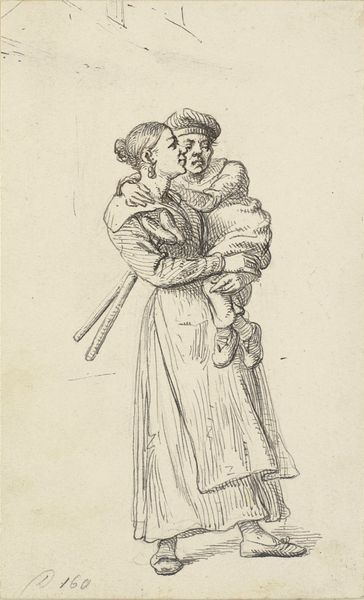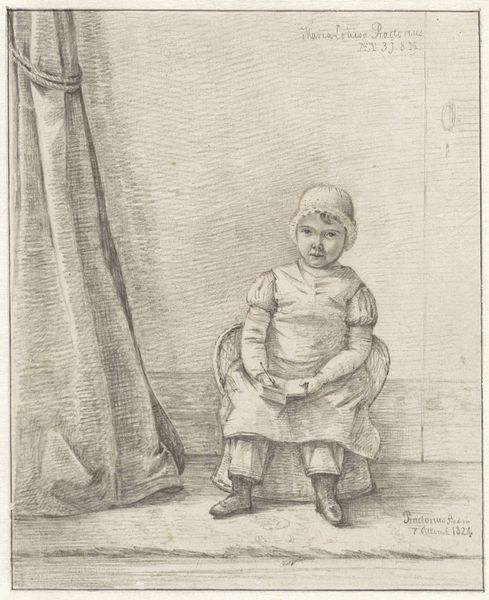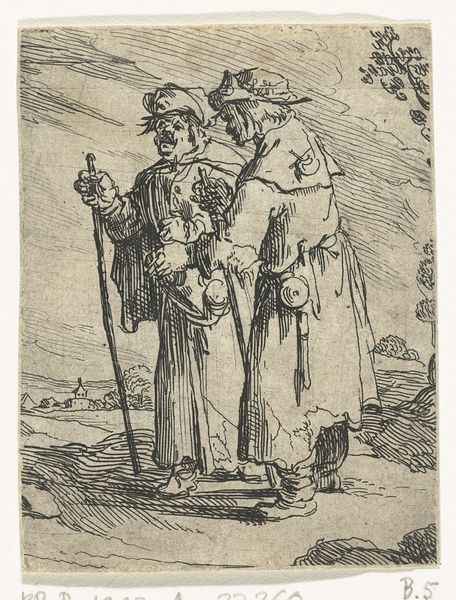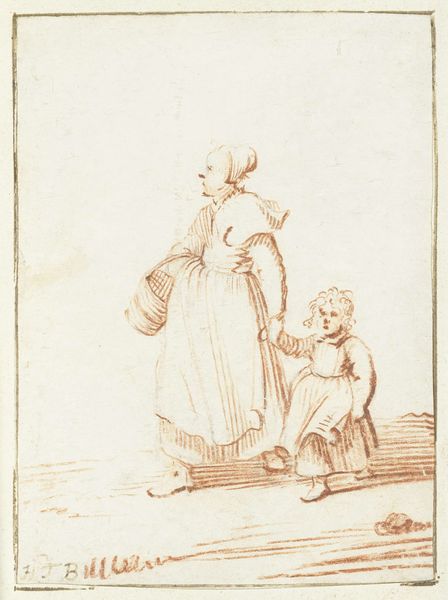
drawing, paper, ink
#
portrait
#
drawing
#
figuration
#
paper
#
ink
#
romanticism
#
genre-painting
Dimensions: height 114 mm, width 63 mm
Copyright: Rijks Museum: Open Domain
Anthonie Willem Hendrik Nolthenius de Man made this etching of a mother and child in 1828. It’s a simple image, but it speaks volumes about the social realities of the Netherlands in the early 19th century. The woman's dress and head covering suggest modesty and perhaps a lower social standing. The child, dressed in simple overalls, holds her hand, creating a sense of dependency. The walking stick implies physical hardship, perhaps alluding to the tough conditions faced by many at this time. This image, made not long after the Napoleonic Wars, invites reflection on the disruptions and social struggles that were prevalent at this time. Understanding this work fully requires us to consider the role of the church and state, particularly how poverty was represented. Through careful study of historical documents and the artist’s other works, we can gain insight into its meaning. Art provides a window into the past, but its interpretation always depends on its social and institutional context.
Comments
No comments
Be the first to comment and join the conversation on the ultimate creative platform.


